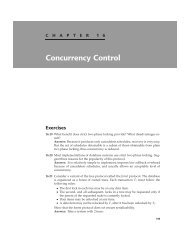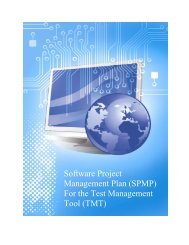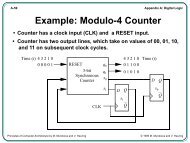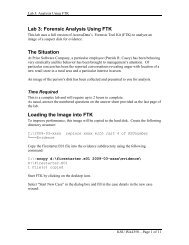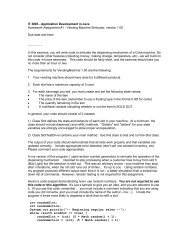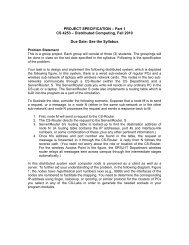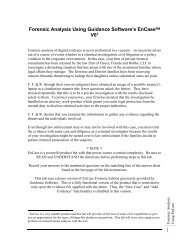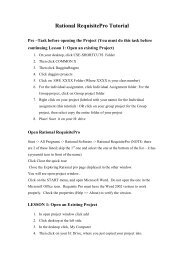Create successful ePaper yourself
Turn your PDF publications into a flip-book with our unique Google optimized e-Paper software.
DRAFT, February 18, 2003, Page 85<br />
Add Files To Project - opens a dialog that allows the user to add files to the project. This dialog allow files<br />
to be added with absolute paths or paths relative to the project file location (if the project is named and<br />
the file(s) are on the same file system (drive) as the project file). The relative paths are also platform<br />
independent.<br />
Remove Selected Files From Project - remove any files selected in the project window.<br />
Create Jar File for Project – brings up a jar creation dialog for the current project.<br />
Jar/Zip Extractor – brings up a jar/zip extractor dialog.<br />
Generate Documentation – brings up a dialog that allows the user to generate project documentation for<br />
Java.<br />
Show Documentation – displays the documentation for the current project, if any. Currently, only Java<br />
documentation is supported.<br />
CSD Window Settings For Project - brings up a CSD Window settings dialog for the current project and<br />
selects the "CSD" tab.<br />
Compiler Settings For Project - brings up a csd window settings dialog for the current project., and selects<br />
the "Languages" tab.<br />
Print Settings For Project - brings up a print settings dialog for the current project.<br />
17.3 Messages Menu<br />
Messages menu commands apply to the currently selected message window (Compile Messages,<br />
jGRASP Messages, or Run I/O).<br />
Save As Text File - allows the user to save the contents of the current message window as a text file, with<br />
a choice of line terminators (binary, DOS format, Mac. format).<br />
Select All And Copy - selects and copies the entire contents of the current message window to the<br />
clipboard.<br />
Clear - clears the current message window.<br />
Print Contents<br />
Native Print - allows the user to print current message window contents using the native system.<br />
This is typically much faster than JVM printing. For UNIX/Linux, the native print is just a<br />
PostScript print using the command set in the global print settings. The font setting is ignored in<br />
this case, and Courier font is used.<br />
Print to File (PostScript) - prints current message window contents to a PostScript file. The font<br />
setting is ignored and a Courier font is used.<br />
Print to File (RTF) - prints current message window contents to a Rich Text file. For now, no<br />
formatting is done. The only print settings that are used are font, font size, and color.<br />
JVM Print - prints message window contents using Java. This tends to be very slow, and<br />
produces very large print files.<br />
Print Settings - opens a print settings dialog for message window, or global or project level print settings,<br />
and selects the "Messages" tab.<br />
17.4 Settings Menu<br />
Virtual Desktop - turns the virtual desktop on and off. When the desktop is turned on, all CSD windows<br />
are moved onto the desktop.





